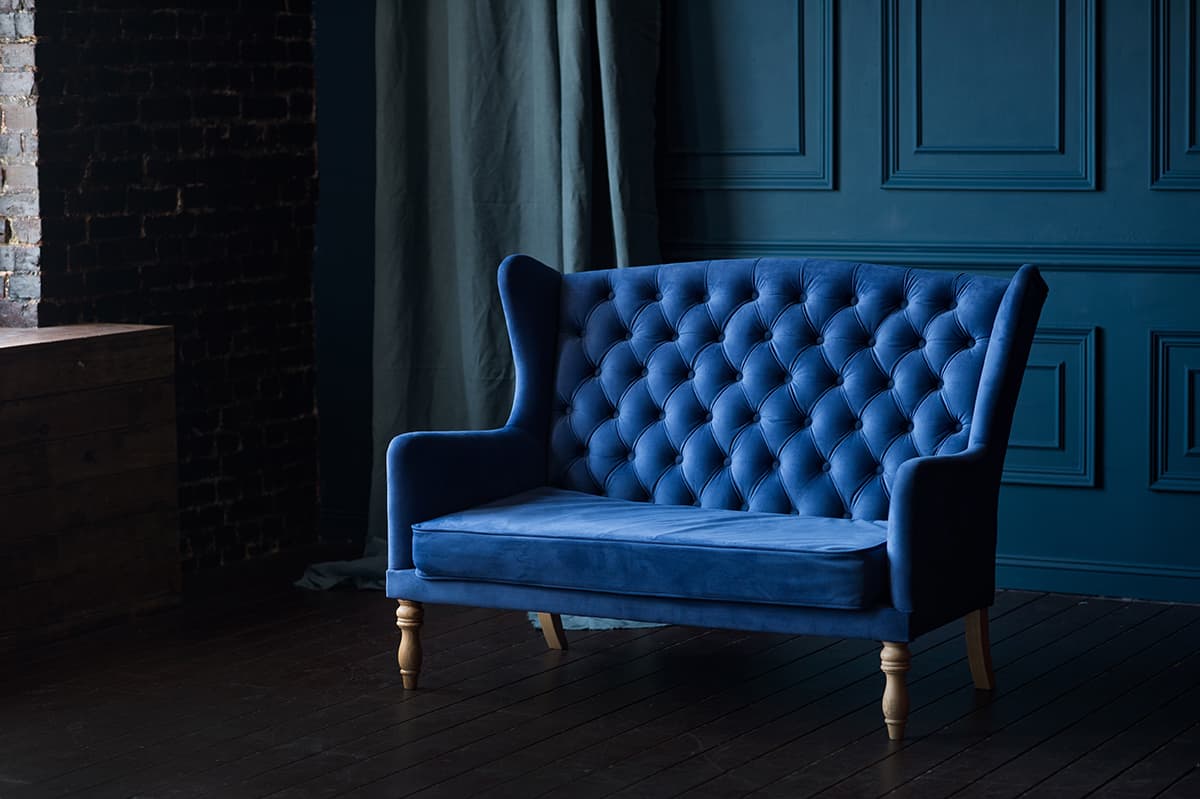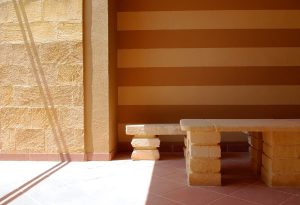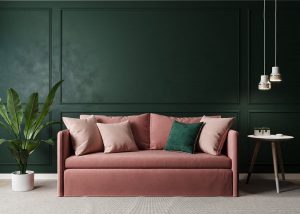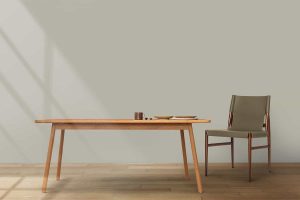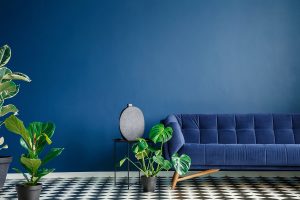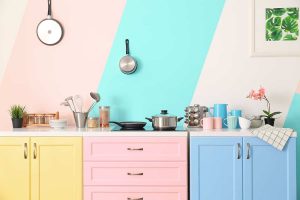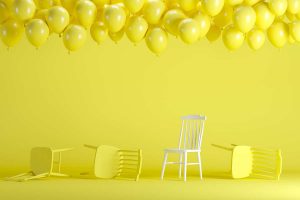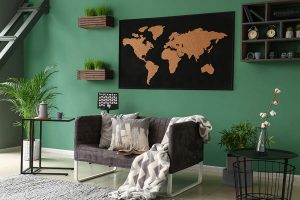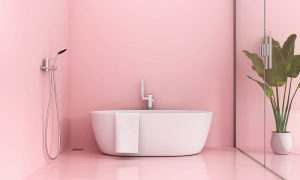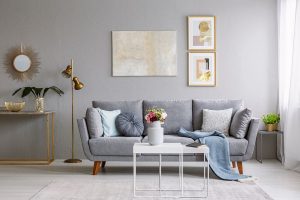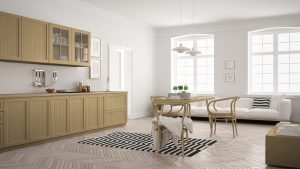Indigo is a dark shade of blue that is most commonly associated with the much-loved blue jeans. However, this is a color that is popular in all areas of design, from fashion through to interiors. Indigo has an interesting history that saw it go from being originally associated with royalty and nobility to modern times, where it became a color more commonly linked to the working classes.
Here we will investigate the origins of indigo as a color and present the best ways to feature this shade in your interior decor.
In This Article
What is Indigo Color?
Indigo is a color that is named after the plant Indigofera tinctoria. Usually, when a color is named after a plant, it is because the flowers match the shade, such as with fuchsia pink or lavender purple, however, in this case, the flowers of the Indigofera tinctoria have nothing to do with the color of indigo, and in fact, the blooms on this plant are a pink-purple shade.
Instead, indigo is named after the dye that is produced by this plant when the leaves are soaked in water and fermented. This is a practice that dates as far back as the 13th century when Marco Polo first described the way that the plant was used to create an indigo-colored dye in India. Historians believe that the use of indigo as a dye actually goes back to the Middle Ages, as there is evidence of its use in easel paintings produced in Europe.
Indigo Color Origin and History
Indigo is associated with India since this is one of the first countries that is believed to make the dye and export it across the seas; however, the Indigofera tinctoria plant has long since been naturalized across much of Asia and Africa, so it is difficult to track down the true origins of it.
The dye became very popular to color clothing with, but since it was impossible to grow in the cool climates of Europe and instead had to be imported from far away countries, European nobility and royalty were the only people who could afford to pay for indigo. As such, the color became associated with the rich and influential.
這是與我們如何看待今天靛藍,which is better known for dying jeans, which are a symbol of the working class. This transition started to happen in the 17th century when a relative of Indigofera tinctoria was cultivated in South Carolina and became known as false indigo.
In the 18th century, the Republic of Genoa (which is now mostly located in modern-day Italy) became the biggest buyer of false indigo dye and used it to color the sturdy cotton fabric, which was made into work clothing for fishermen and miners.
The fabric became known as the ‘blue of Genoa’, which was translated to French since this was commonly spoken across Europe at the time, to the ‘Bleu de Gênes.’ This was later shortened to an English derivative which we now know as ‘jeans.’ Indigo dye was also central to the beginnings of what we now call ‘denim’ since the town of Nimes in France decided to make their own sturdy fabric to compete against the blue fabric of Genoa.
The resulting fabric was known as ‘serge de Nimes,’ which translates to ‘a sturdy fabric from Nimes.’ This would later devolve into what we now call ‘denim.’ The American Gold Rush followed by the industrialization of both America and Europe and the world wars meant that the need for workers’ jeans skyrocketed.This is why indigo today is predominantly associated with workers as opposed to the nobility.
The casual feel of this color is one of the things that makes it a great choice in laidback interiors. Indigo is popular in coastal and nautical color schemes, as it represents the ocean but also contributes to the informal atmosphere due to its association with the working classes.
Denim jeans are considered a staple in fashion, and as such, they are a neutral item that can be paired with anything. This is a rule we can also follow in interior design, with almost any color working well next to indigo blue.
Best Colors to Use with Indigo
Red
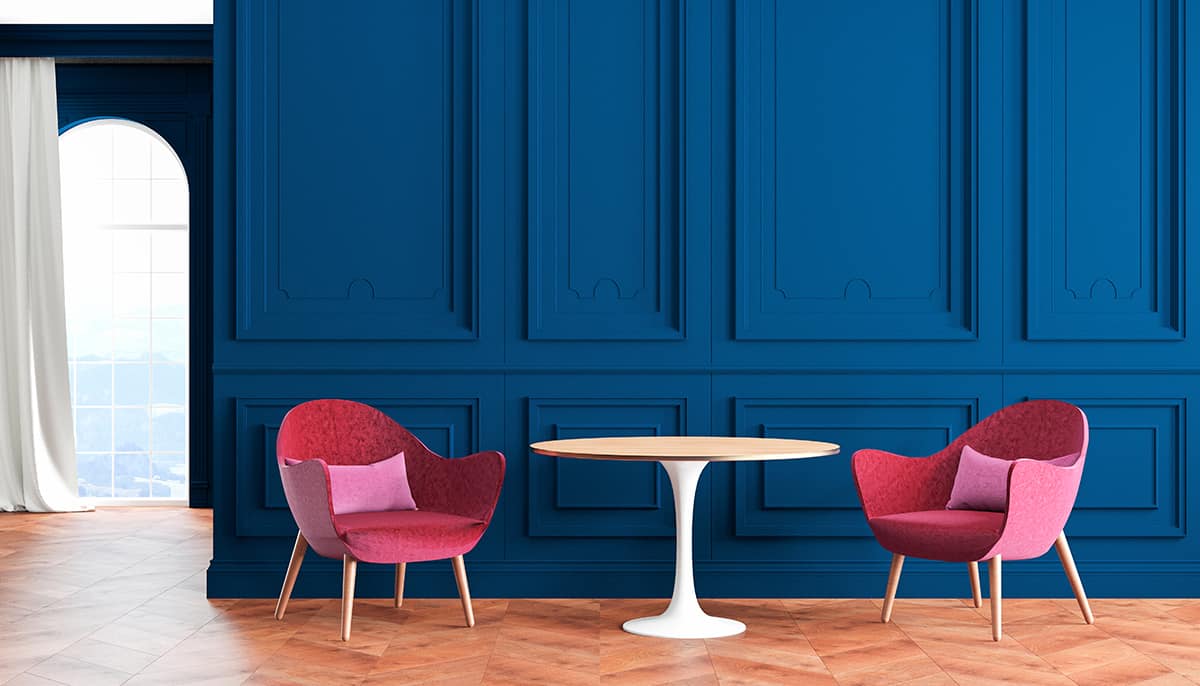
Indigo is a deep shade of blue with some purple undertones. It is distinctly different from navy, which is a darker shade of blue, but it can be used with many of the same shades as navy.
紅是一個非常偉大的顏色與激起了o because it creates a secondary contrast that is less intense than a direct contrast. This is because red sits next to orange on the color wheel, which is the opposite color to blue.
As indigo and red are both very saturated colors, it is best to choose a muted shade of red with indigo, such as burgundy, or use it sparingly to give vibrant shocks of contrast. For example, on a house that has indigo-colored siding, a bright cherry red-painted door would look great.
In a bedroom with indigo walls, avoid choosing large items in red such as curtains or bed sheets, as this would be too polarizing. Instead, opt for smaller objects in the contrasting color, such as a red vase, a red photo frame, or a red cushion.
Orange
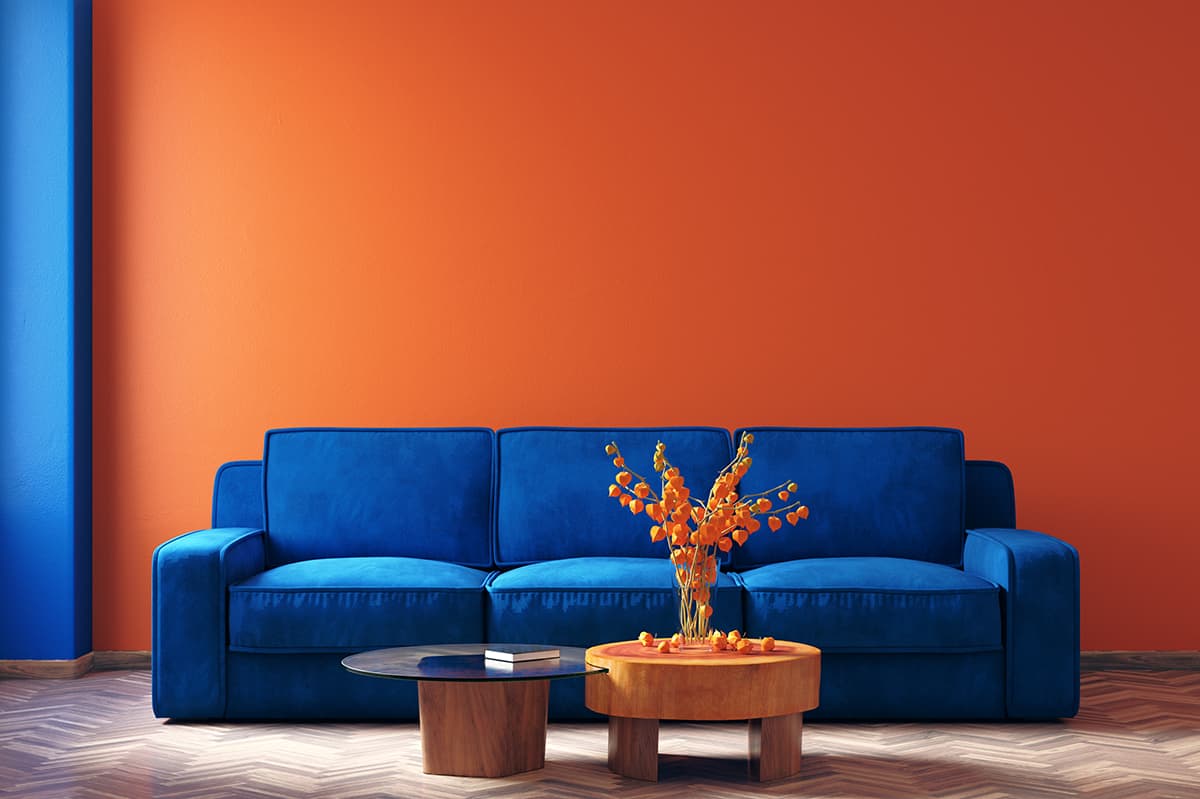
Orange is the opposite color to blue on the color wheel, which means indigo and orange are both contrasting and complementary shades. These two colors serve to bring the best out in each other, with each shade making the opposite shade brighter and bolder.
In a minimalist room, you can use these colors to great effect set against a white background for a really cool and contemporary look.
With white walls and a white sofa, choose indigo curtains and bright orange cushions for a striking style. You can also use more muted shades of orange with indigo for a contrast that is easier on the eyes.
Burnt orange can be warm and cozy with indigo, or choose a pale orange shade such as apricot for a sweet or exotic look.
Read also:11 Excellent Colors that Go with Orange with Pictures
Green
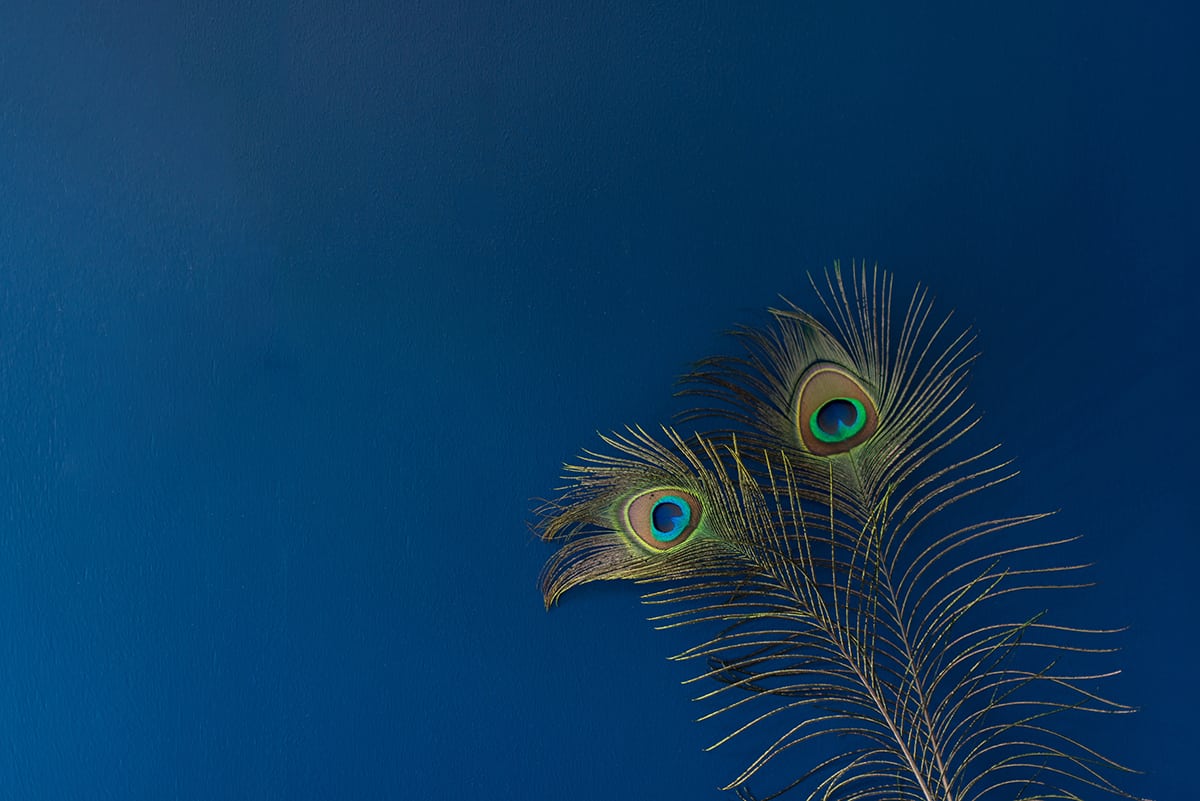
Green and blue create a sense of harmony when used together, and there are many shades of green that will complement indigo. Use indigo as a neutral in a natural themed room with olive green.
Choose olive walls with an indigo sofa or indigo walls witholive greenpainted kitchen cabinets. Mint green will look refreshing with indigo and can be used for art deco-style decor, while forest green and indigo work really well together in a mid-century modern themed space. Lime green is also a fun color to use with indigo if you want a space to feel energizing and vibrant.
Choose wallpaper with an indigo background and a lime green repeating leaf pattern, and use it on a feature wall in a large room or on every wall in a small space like a bathroom. Pick out both shades from the wallpaper to achieve a cohesive style, with indigo curtains and lime green lampshades.
Pink
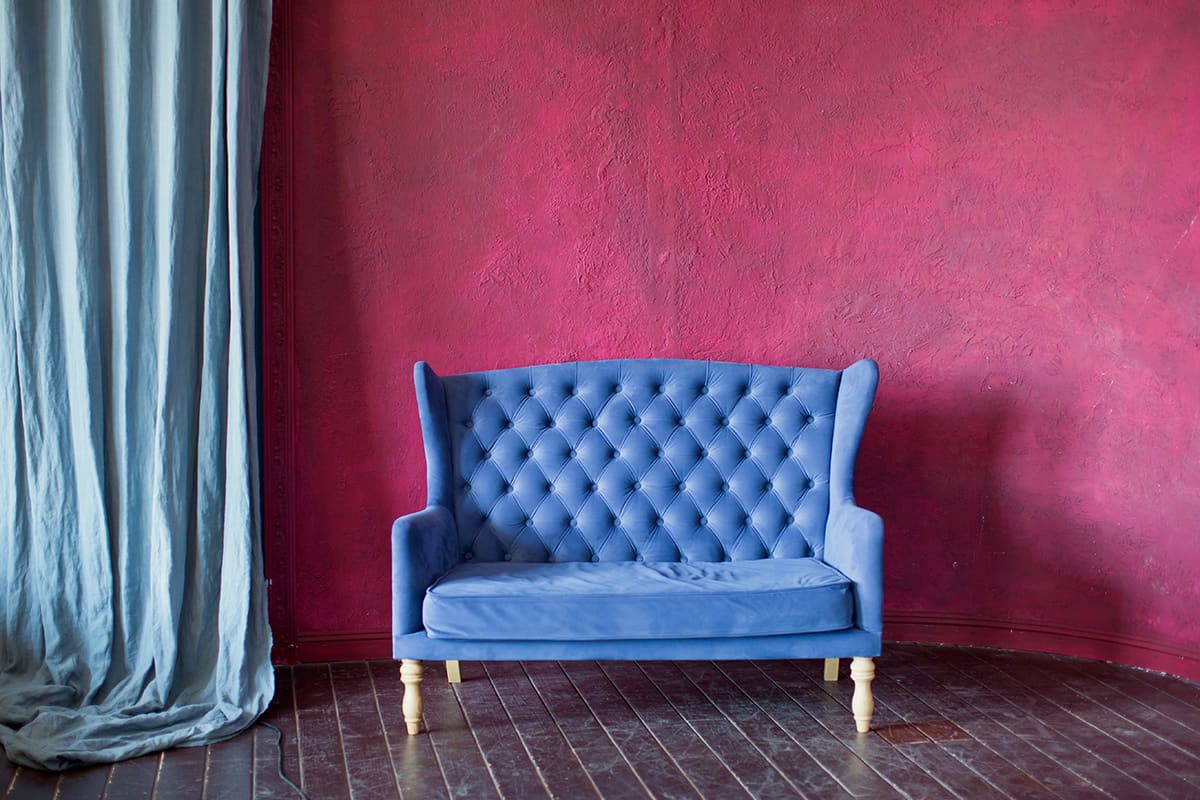
As a color that is often associated with masculinity, indigo can be balanced out by pink, which is more synonymous with femininity. Choose hot pink accents in an indigo room for a tropical look, for example, a flamingo print comforter set against indigo walls.
Soft shades of pink also work really well with indigo to create an atmosphere that is more subdued. Achieve an intimate and elegant dining room by painting walls in a dark shade of indigo and contrasting this with blush pink velvet curtains and rose gold place mats on the dining table.
Read also:11 Colors that Go with Pink (Photos Included)
Yellow
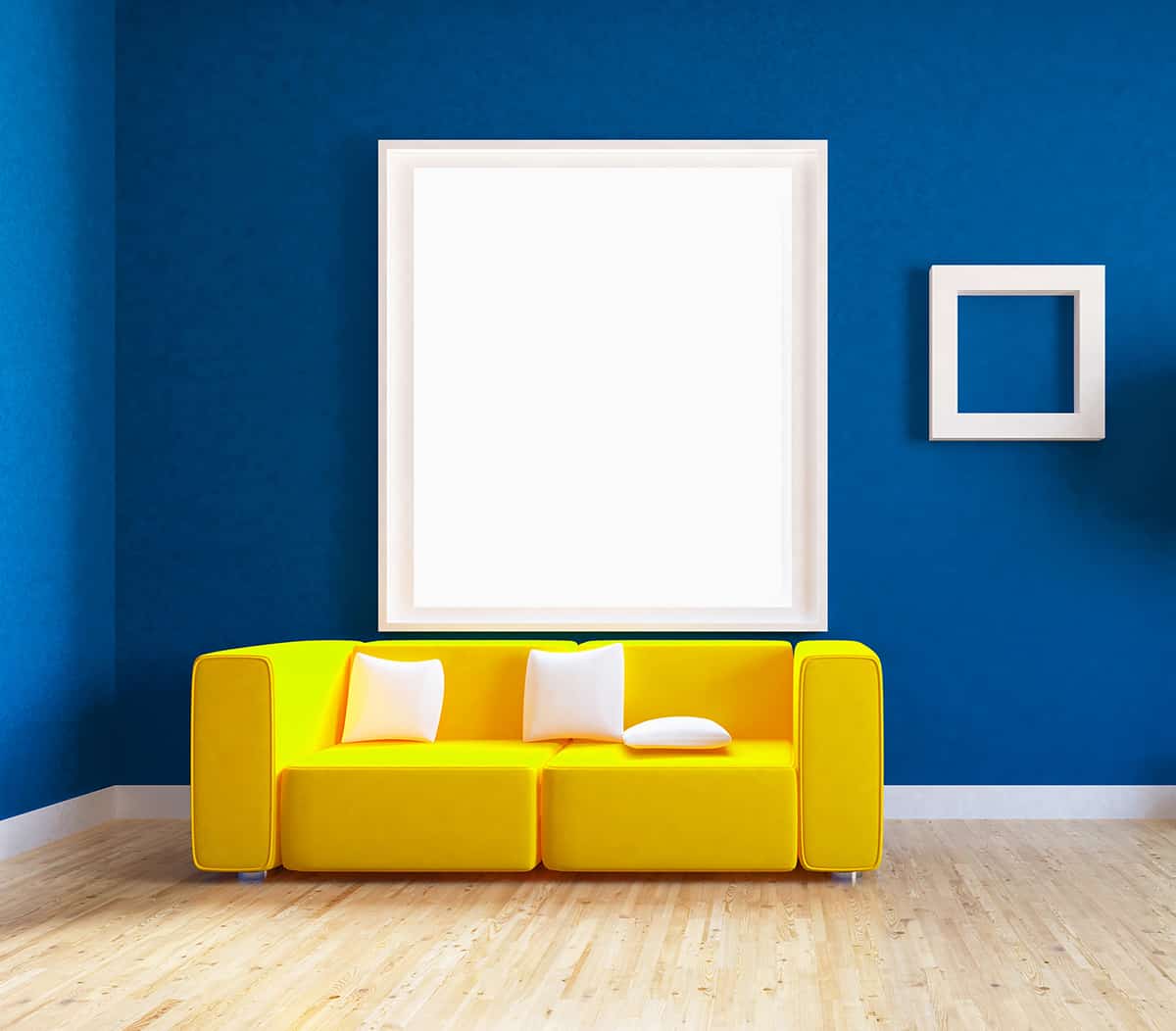
黃色是一種顏色,通常搭配靛藍because it feels fresh and joyful. This was a popular color scheme in kitchens and bathrooms in the 1990s, but you can give it an updated modern appeal by using bright canary yellow instead of pastel lemon yellow.
Yellow can also work really well with indigo and white in a coastal-themed space, giving it a cheerful lift and a splash of personality in an interior decor that can feel flat. In a living room, decorate the walls in indigo blue and choose a mustard yellow sofa to contrast against it. This will make for an interesting look that feels simultaneously contemporary and warm.
As indigo is a deep and bold color that is able to hold up against most shades, you can choose any shade of yellow you like and be sure that it will work with the blue.
Read also:10 Inspiring Colors that Go with Yellow
White
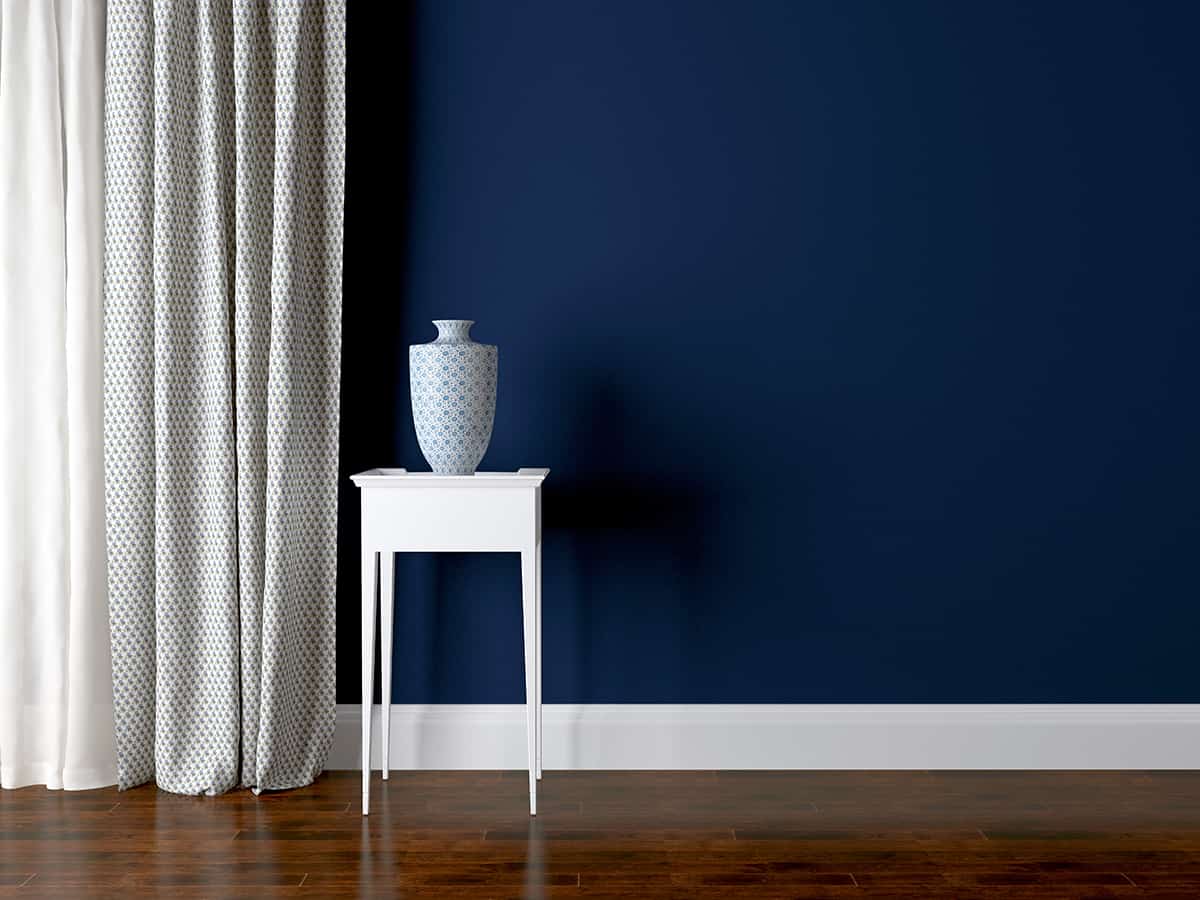
If you want indigo walls to stand out, then paint the trim and molding in pure white. This is a look that is popular on the outside of homes, with indigo used for siding and white used for the trim. The starkness of the white allows the bold tones in the indigo to really shine.
This is a color combination that can be used well in Scandinavian style decor, as well as coastal-themed spaces. You can also set indigo accessories against white walls for a cool punch.
